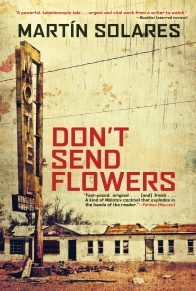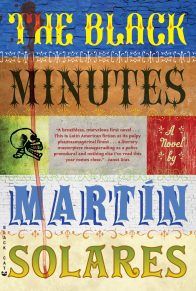In this finely wrought collection of essays, Martín Solares examines the novel in all its forms, exploring the conventions of structure, the novel as a house that one must build brick by brick, and the objects and characters that build out the world of the novel in unique and complex ways. With poetic, graceful prose, that reflects the power of fascination with literary fiction, Solares uses line drawings to realize the ebb and flow of the novel, with Moby Dick spiraling across the page while Dracula takes the form of an erratic heartbeat. A novelist, occasional scholar, and former acquiring editor in Mexican publishing, Solares breaks out of the Anglo-American-dominated canon of many craft books, ranging across Latin and South America as well. He considers how writers invent (or discover) their characters, the importance of place (or not) in the novel, and the myriad of forms the novel may take. Solares’ passion for the form is obvious, and his insights into the construction of the novel are as profound as they are accessible. This is a writer’s book, and an important contribution to the study of craft and fiction.
Praise for How to Draw a Novel:
Finalist for the Big Other Book Award for Translation
“Provocative . . . Exactly how [books] think, and achieve motion, is the puzzle that Mr. Solares attempts to solve—at times whimsically—in a book that is itself an impish little creature.”—Anna Mundow, Wall Street Journal
“Playful, slightly whimsical . . . charmingly concise prose . . . Solares’ idiosyncratic point of view makes for a refreshing accompaniment (if not a corrective) to the over-determined advice one usually gets from books on writing a novel, and serves as a mental palate-cleanser, spurring fresh thoughts and perspectives. How to Draw a Novel is an imaginative examination of the art of novel writing that is thought provoking and invigorating in equal measure.”—Ho Lin, New York Journal of Books
“Part craft lesson, part reading diary, part Pictionary . . . these essays invited me to step out of the familiar as true friends often do . . . How to Draw a Novel offers not only a fresh approach to classic novels and to the act of writing, but also a chance to reimagine ourselves in relation to a practice of reading we thought we understood.”—Heather Cleary, Literary Hub
“The author’s mercurial focus flows in unexpected directions, mixing literary analysis, biographical tidbits . . . and punchy aphorisms . . . in kaleidoscopic fashion, and the line drawings amuse . . . It adds up to an audacious and unique consideration of the art of the novel.”—Publishers Weekly (starred review)
“A quirky, playful addition to the well-populated subgenre of fiction writers writing about writing fiction.”—Kirkus Reviews
“How to Draw a Novel . . . brings whimsy and ingenuity to a genre lacking in both.”—Marek Makowski, On the Sea Wall
“Inspired yet curious . . . of great value to anyone concerned about the art of writing. It is also a book for readers. Solares serves up insights so lucid and original they feel startling . . . [How to Draw a Novel] feels fresh and vital, unencumbered by rectitude or solemnity, proposing and digressing with abandon, because, as he reminds readers, in the end, the digressions are the point.”—Library Journal
Praise for How to Draw a Novel (Mexican edition):
“Although it is formally a book of essays, the truth is that How to Draw a Novel is something more, much more . . . the book has a lot of talk, a lot of mischief, a lot of confession.”—José David Cano, Forbes
“Martín Solares has managed, with this book, to create a world not just for himself, but also for the reader, who is invited to read novels as if he were drawing them himself, and to write them as if his own fate was at stake in the plot.”—Gonzalo Lizardo, Confabulario
“This title is recommended reading for anyone who wants to venture into fiction writing; or also for those who like to read novels and want the backstage of this literary genre, without pretensions to writing . . . A kind of literary workshop, written with a conversational tone, as if he were speaking directly to the reader.”—Jorge Perez, +Letras
“A carefree and sincere journey through abstract but intuitive representations of the structure of the novel.”—Isai Moreno, Nagari
Praise for Martín Solares:
“A powerful, kaleidoscopic tale . . . another urgent and vital work from a writer to watch.”—Booklist (starred review) on Don’t Send Flowers
“Mr. Solares is a graceful, even poetic, writer, especially in his hard-boiled dialogue and his descriptions of the wildly varied landscapes and ethnic types of northern Mexico. Though the world of The Black Minutes is one to inspire fear and revulsion, Mr. Solares’s descriptions of it are oddly beautiful and fascinating in the same way that overturning a rock and observing the maggots beneath can be a perversely edifying spectacle.”—Larry Rohter, New York Times
“Rich in conception and execution . . . Don’t Send Flowers is full of odd twists and strange surprises.”—Wall Street Journal on Don’t Send Flowers
“Martín Solares uses the codes and formula of classic crime novels to create a universe where the reader is permanently on a fluctuating border between dream and reality, between fiction and the authentic violence of facts.”—Le Monde (France) on The Black Minutes















